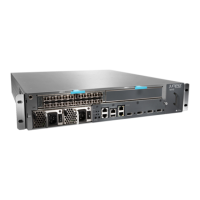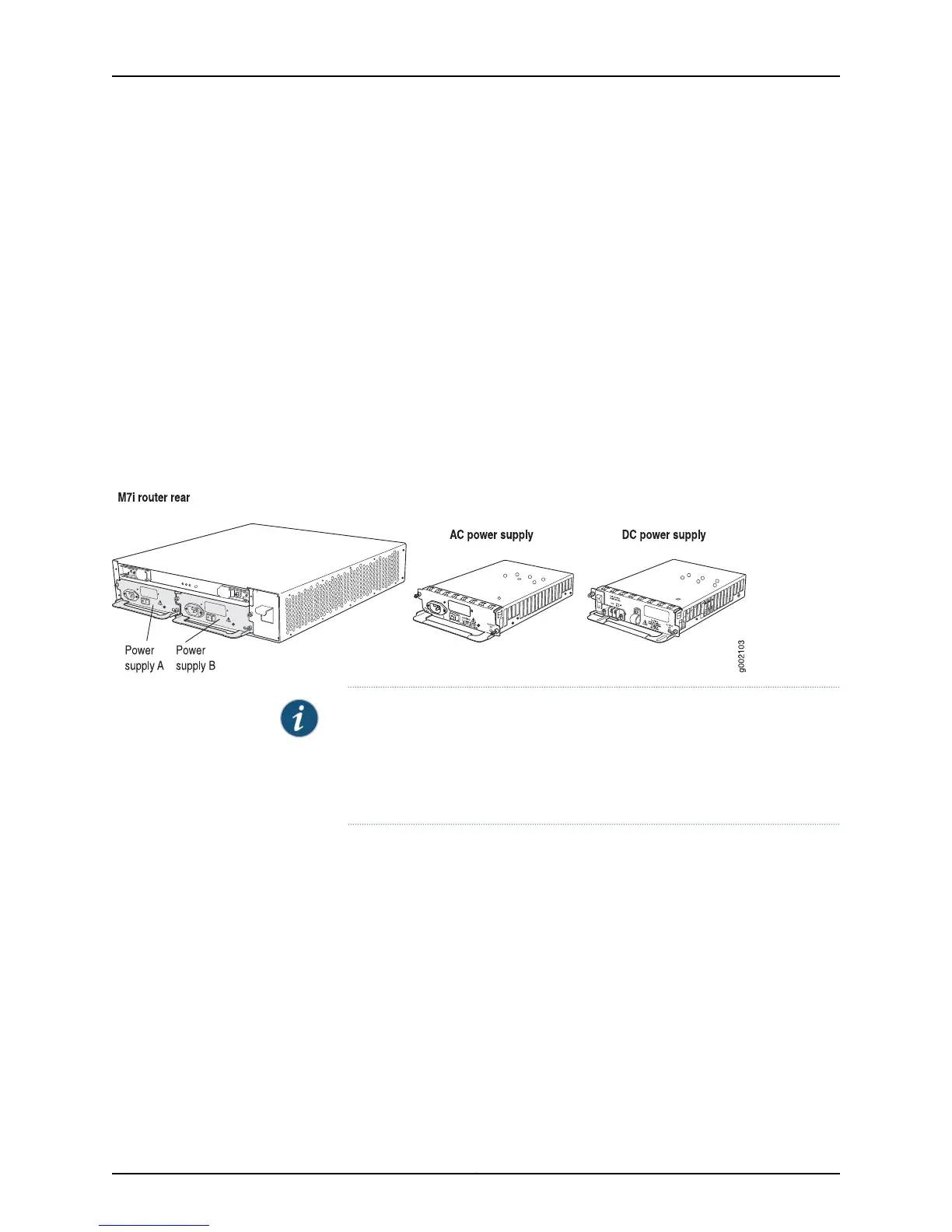Related
Documentation
Checklist for Monitoring Redundant Power Supplies on page 607•
M7i Router Redundant Power Supplies
Two load-sharing, isolated power supplies are located at the bottom rear of the M7i
router chassis. The router uses either AC or DC power. Figure 300 on page 610 shows the
M7i router power supplies and where they are installed in the chassis.
When the power supplies are installed and operational, they automatically share the
electrical load.
For full redundancy, two power supplies are required. If a power supply stops functioning
for any reason, the second power supply instantly begins providing all the power the
router needs for normal functioning. The second power supply can provide full power
indefinitely.
Figure 300: M7i Router Redundant Power Supplies
NOTE: When two power supplies are installed, at least one Routing Engine
and one FPC must also be installed for both power supplies to power on. In
the absence of this minimum load, only one power supply starts. (The router
powers on and operates correctly with one power supply, but without the
redundancy benefit of having a second power supply installed.)
Related
Documentation
Checklist for Monitoring Redundant Power Supplies on page 607•
M10i Router Redundant Power Supplies
The M10i router uses either AC or DC power. You can install up to four load-sharing power
supplies at the bottom rear of the chassis. Figure 301 on page 611 shows the M10i router
power supplies and where they are installed in the chassis.
The AC power supplies are fully redundant. If one power supply fails or is removed, the
remaining power supplies instantly assume the entire electrical load. Two power supplies
can provide full power for as long as the router is operational. Three power supplies are
required for redundancy. Power supplies must be present in slots P/S 0 and P/S 1 for the
router to operate.
Copyright © 2012, Juniper Networks, Inc.610
M Series and T Series Routers Monitoring and Troubleshooting Guide

